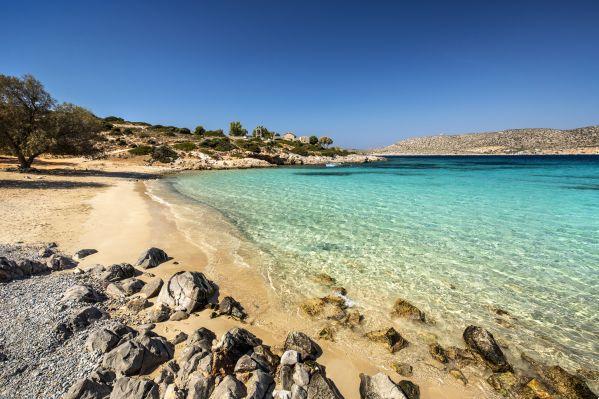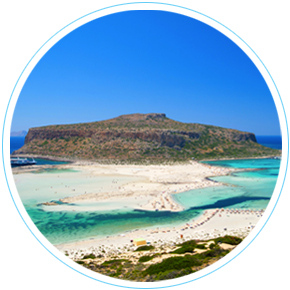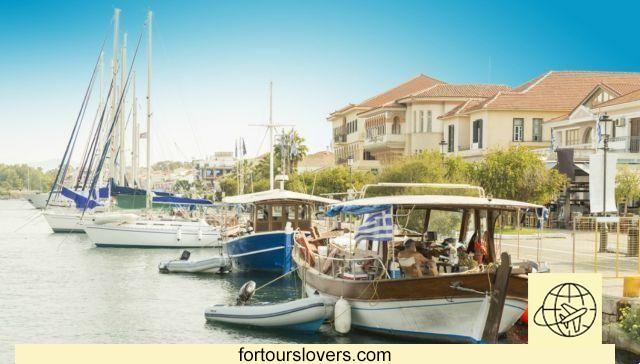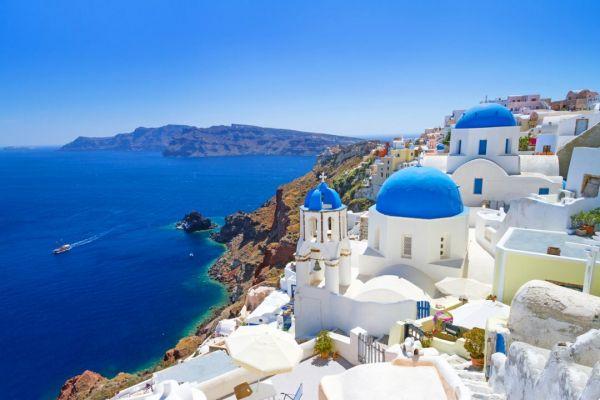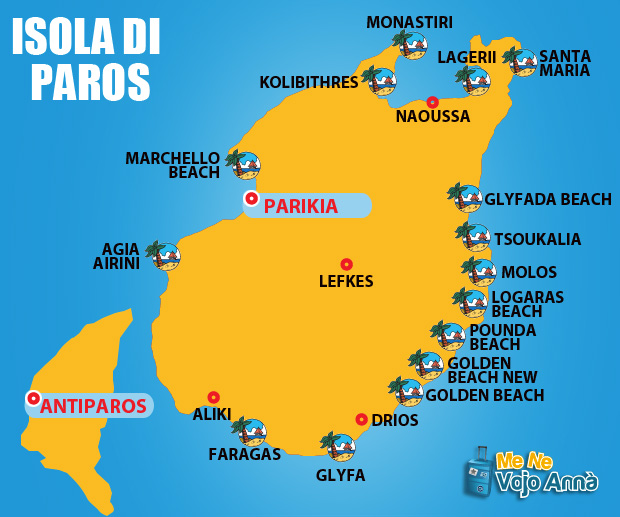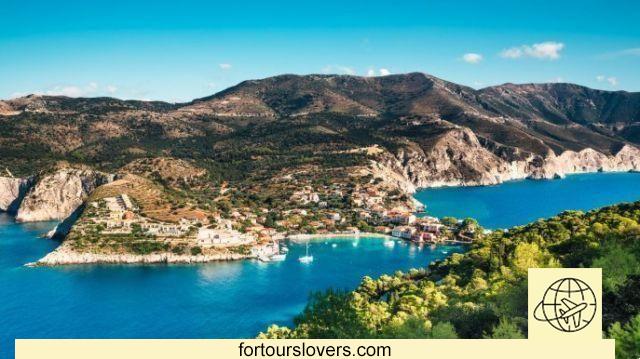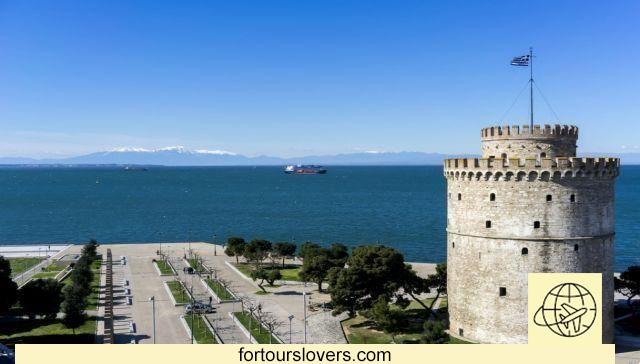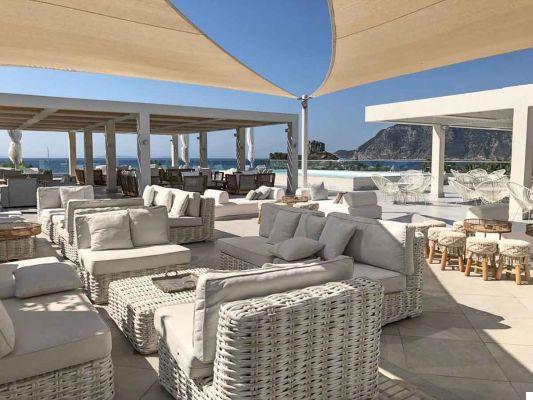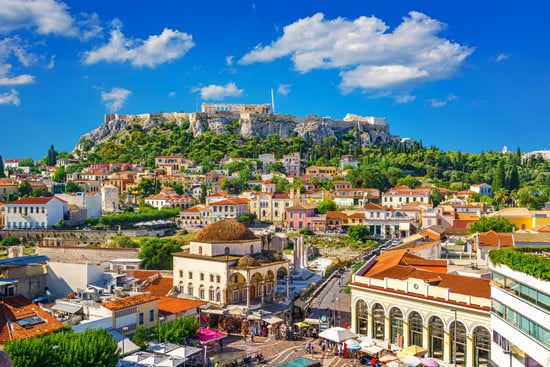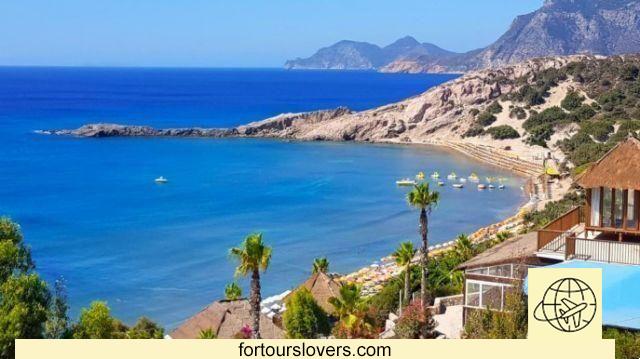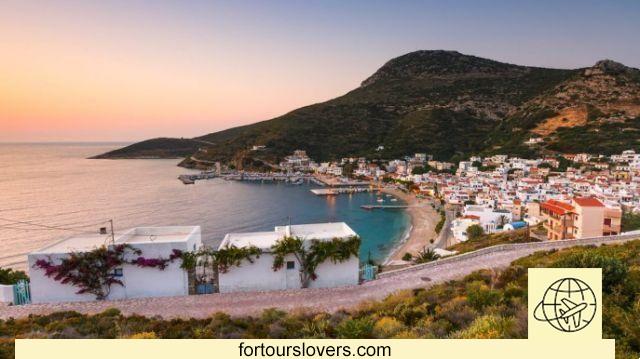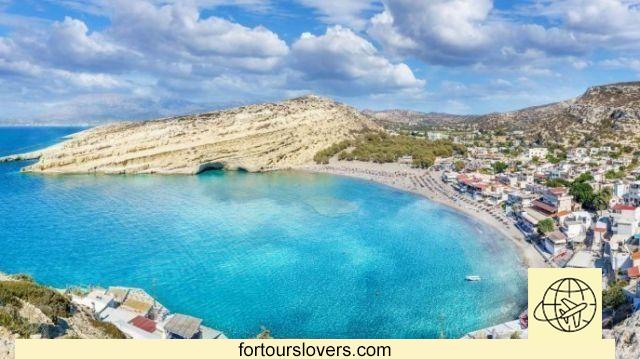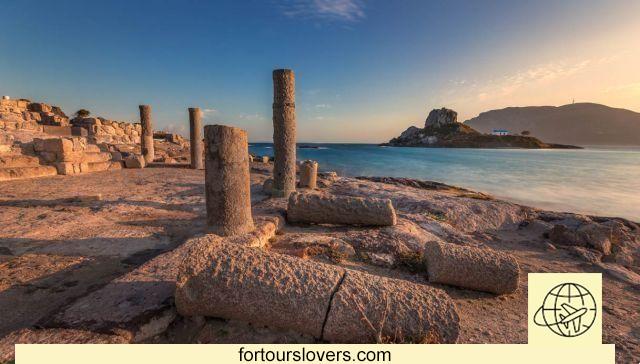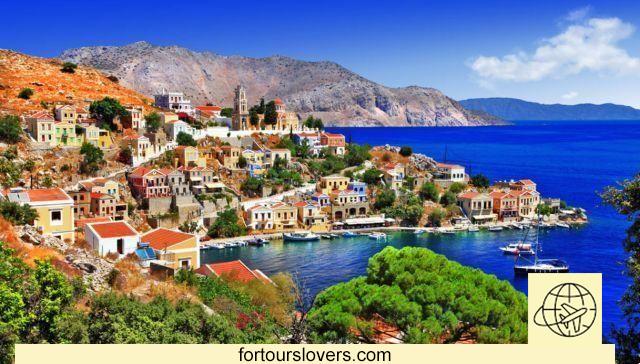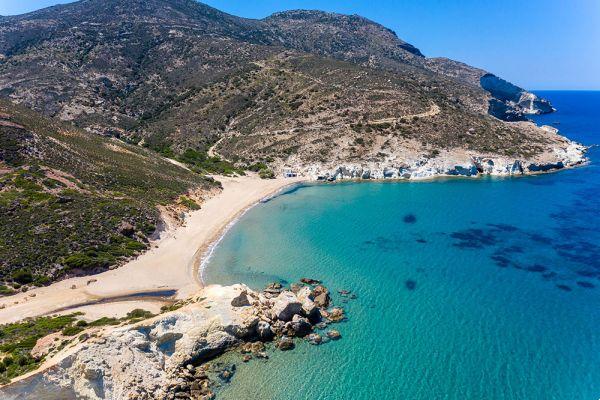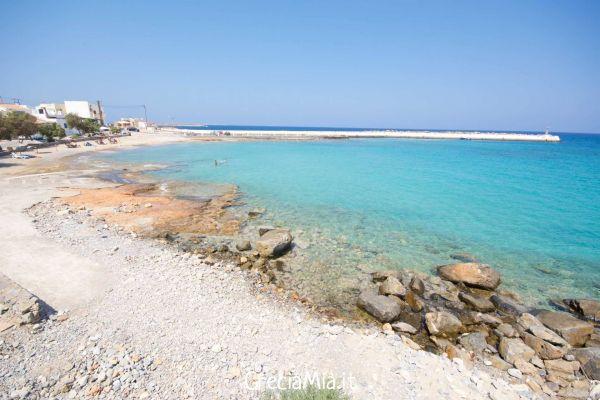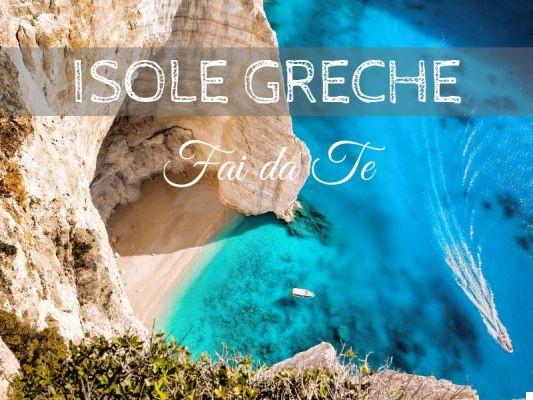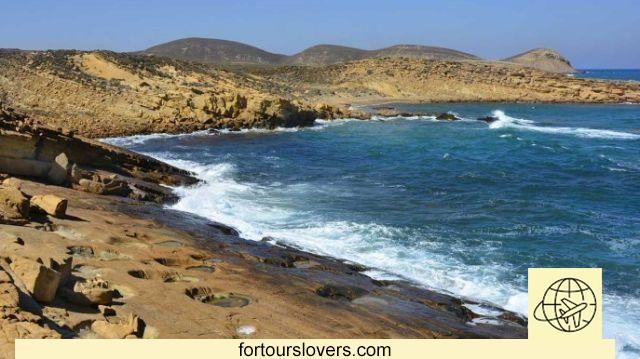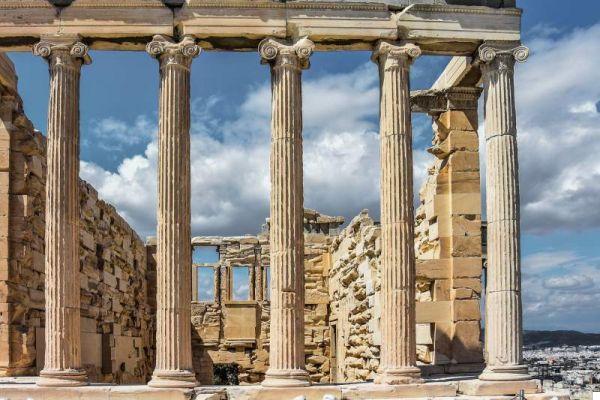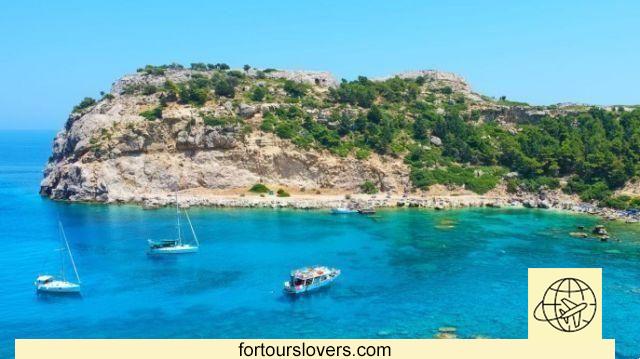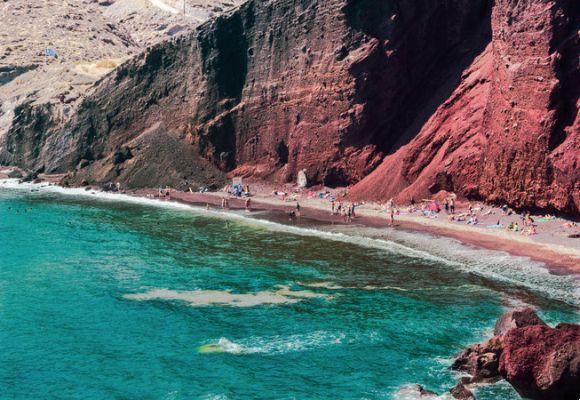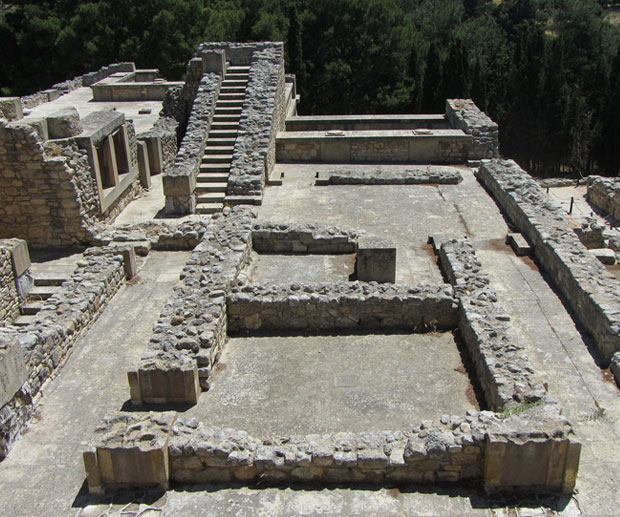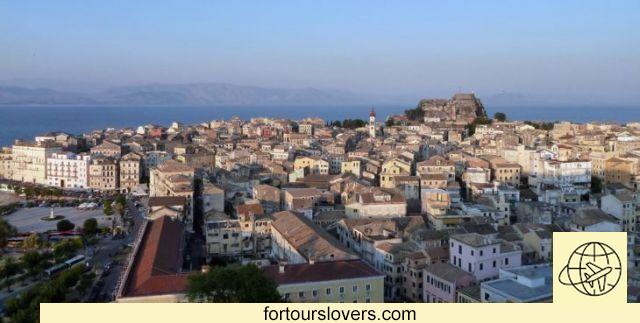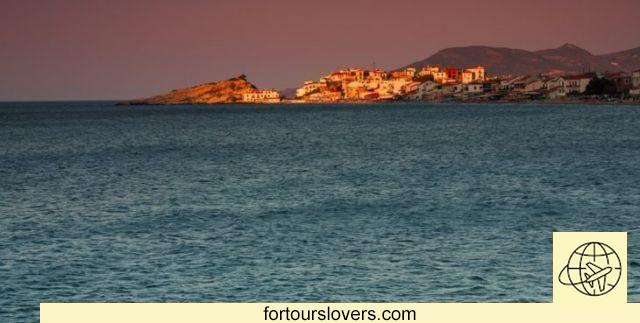
Samos
11 things to do and see in Samos and 1 not to doIf what you want is one holiday of total relaxation, without wild entertainment, discos, holiday villages, mega hotels etc. then Samos (or Samo) is the right place for you. On this eastern Aegean island, a stone's throw from Turkey, the rhythms are still mainly linked to agriculture and fishing, which are still very important in the local economy. Above all agriculture, alongside tourism, plays a leading role: viticulture and olive growing, in fact, are decisive for local income. Even more so after the crisis that has been putting the whole of Greece to the test since 2011. It must be said that on the islands the social tensions are not the same as in Athens, and indeed, in this specific case, it is agriculture that has cemented community ties even more. In other words, the home garden, together with the vineyard, allows the inhabitants of Samos to get by, helping each other if necessary. The circumstance is particularly appreciated by tourists who, as we said at the beginning, also choose the island for its frugality. Obviously there is so much to see and know: archeology, beautiful beaches and several hiking trailsThere is no shortage of attractions in Samos. Below we see together the main points of interest of the island. Happy reading. (On the cover Kokkári).
1 Vathy
Our story of Samos starts from the capital Vathý (or Samos city), just over 8000 inhabitants on the north-eastern side of the island. Despite being the most important center, Vathy is not the main tourist resort. Indeed, those who decide to stay there almost always do so because of the more affordable hotel rates compared to the rest of the territory. This does not mean the absence of social and night life. There is no shortage of clubs, bars and restaurants, especially on the promenade that goes from the ferry pier to the main square of the town. However, the attractions are mainly cultural and historical. There old part (Ano Vathý), for example, it offers significant evidence of the island's ancient architecture. It almost seems to be in a XNUMXth century village, all made up of houses, public fountains and churches. And speaking of churches, it is certainly worth a visit there parish of San Spiridione who, we recall, is also the patron saint of the island of Corfu. Finally, the Archaeological Museum in which many artifacts found in the areas of Heraion and Pythagoreion, main archaeological sites of the island have converged. In short, Vathý is certainly an indispensable step to deepen the genius loci of Samos, that singular mix of ancient and modern that makes Greece and its islands so fascinating.
2 Pythagório
After Vathý it is the turn of Pythagório. As can be easily understood, the place owes its name to Pythagoras, mathematician and native philosopher of the island. A statue in front of the fishermen's pier remembers the illustrious ancestor, inventor of a very important theorem, still studied in every part of the world. And, the statue of Pythagoras, together with the port (behind which clubs, bars and shops have risen), are two of the most interesting points of the country. Pythagório, in fact, despite having only 1300 inhabitants, is the first tourist destination of Samos. There are many beds, even if, as already stated at the beginning, there are no large hotels. Rather, there is a widespread receptivity able to meet the most disparate needs of visitors starting, obviously, from the available budget. There is, here too, a Archaeological Museum whose visit can be combined with that of Loghotetis Castle and Monastery of Panagia Spiliani. The first is a defensive fortress a few meters above sea level and close to the historic city center. The building was commissioned in 1822 by the then leader of the rebels of Samos struggling with the war of liberation from the Turks. Panagia Spiliani, on the other hand, is a small monastery with a church in common with the Catholic and Orthodox confessions. Not far away, there is a suggestive natural cave which has also been used as a place of worship for centuries. Mostly, Panagia Spiliani is a very panoramic place with a view that embraces the city, the sea and the airport of Samos, just 4 kilometers from the country. It's not over, because the appeal is missingaqueduct of Eupalino, engineering work dating back to 550 a. C. with which the problem of water shortage was solved in relation to the urban development of the territory. This aqueduct, entirely excavated in the Kastelli hill (where the Loghotetis Castle is located), was built according to avant-garde techniques for the time. Suffice it to say that in order to convey the waters coming from a spring outside the city walls, it was necessary to insert over 4000 clay pipes into the tunnel (the Eupalino aqueduct is not always open to visitors, make sure on the place of the opening).
3 Heraion
About 10 km south of Pythagório is the village of Ireón. Until a few decades ago, Ireón was nothing more than a small fishing village used by the locals as a base for their daily activities (from mending nets, to oil and olive deposits), only to retreat to the hinterland where they had their homes. Since the 80s of the last century, however, the town has known a notable tourist development with the birth of various commercial activities (taverns, bars, restaurants) mainly close to the beach. However, at the base of the territory's fortunes there is not only the suggestive promenade. Woe to forget, in fact, the archaeological site of Heraion, UNESCO World Heritage Site since 1992. It is, as the name suggests, an Ionic temple dedicated to the divinity Era. The first foundation dates back to the XNUMXth century BC. C., even if it is two centuries later, coinciding with the period of maximum splendor of Samos, that this place of worship took its first, spectacular, arrangement with the construction of a peristyle of over 100 columns. To build the sacred monument Rhoicos e Teodoros, two architects from Samos who provided to cover the temple with wooden beams and roof. A fire, however, destroyed the work forcing the tyrant Polycrates to commit to a new, and even more mammoth, project. This project, however, was never completed and of which today, after thousands of years, only the ruins remain. Among these stands out a vertical pillar of about 10 meters (kolónna) starting point of the archaeological visit of the site. Even so, however, there are many traces that have proved useful for understanding the evolution of classical architecture. Hence, the UNESCO protection which also concerns the Eupalino Gallery mentioned above. To be seen!
4 Samiopoúla
The island of Samiopoúla is an unmissable stop on a holiday in Samos. It is located about a kilometer south of the mother island (administratively it is part of the municipality of Spatharéi) and is easily accessible from Pythagorio. There are two options available: there are those who stop for the whole day, taking the opportunity to get to know this comma of land up close (there is also a small church, Agia Pelagia) and those who, instead, stop just for a swim then returning on board the boats that shuttle with the town. The crystal clear water, together with the view of the Turkish coast and the close-up backdrop of Samos make this trip full of charm. Not to be missed!
5 Excursion to Mount Kerkis
As mentioned at the beginning, Samos is a paradise for trekking lovers. There are many hiking trails even if, unfortunately, not all duly marked. There is one, however, that more than others fascinates tourists who love greenery. We are talking about the path that from Votsalakia, a tourist resort on the southern side of the island, leads to the summit of Mount Kerkis at 1433 meters above sea level. Or rather, it leads to the top of the Vigla, the highest of the reliefs of this mountainous complex that dominates the western side of Samos. The excursion itself is not very difficult and, indeed, if desired, the first part of the route (from Votsalakia to the Monastery of Evangelistrias) can also be done by car or scooter. From the monastery continue to the small church of Profitis Ilias and from there, finally, you reach the summit of Vigla marked by a cross. Three tips to follow: the first, quite obvious, is to tackle an excursion like this with right equipment (layered clothing, breathable material, cap, water supply, technical shoes); the second is to carry the camera; the third, finally, is of rely on expert local guides. For more information about it we recommend the site: www.samosoutdoors.com. To do!
6 Karlóvassi
Karlóvassi is the second largest city on the island after Vathý. Like the latter, however, it has retained its authenticity. It must be said that the western area of Samos is definitely wilder than the rest of the island. The inhabited centers are scattered, continuously interrupted by cliffs and Mediterranean scrub. Karlóvassi is no exception. Divided into five districts (Paleó Karlóvassi, Meséo Karlovassi, Néo Karlóvassi, Órmous Karlvássou, Limáni) it is not very touristy with the exception of the Paleó Karlóvassi and Limáni districts. The first coincides with the old part of the city. Hence the tourist interest, linked to the possibility of deepening the typical atmosphere of the villages of the Greek islands. Limáni, on the other hand, is located close to the port area and is the district where most of the city's hotels are concentrated. About two kilometers west of the port is there Potámi beach from which, in turn, it is possible to reach one of the most beautiful corners of the island: the Potámi waterfalls, which we will discuss more fully in the next point.
7 Potámi Falls
The Potámi Waterfalls (Potámi Waterfalls) are an unmissable stop on a trip to Samos. They are located at the end of a path behind the beach of the same name (see photo) even if, beyond a certain point, it is necessary to immerse yourself in the water up to the hip to reach the actual waterfalls. Which then, in reality, it is a a drop of water of just two meters that ends in a pond where it is nice to swim. Especially during the summer, when the climate on the beach becomes hot, while in the path behind the temperature it remains decidedly cooler both for the presence of trees and, above all, for the colder temperature of the stream. Clearly the path is not for everyone. While not presenting major difficulties, those who do not want to immerse themselves in the waters of the falls will do well not to continue further along the path.
8 Manolátes
At 16 kilometers from Karlóvassi and 12 from Kokkári (see next point) there is Manolátes, just over a hundred inhabitants on the slopes of Mount Ambelos, the second massif of the island after Kerkis. Manolátes is thetraditional greek village emblem. Ancient houses; flowered balconies; narrow streets; vegetation and landscape all around. The view, truly stupendous, goes as far as the coasts of Turkey in an enchanting scenario where the blue of the sea and the sky and the green of the Mediterranean scrub dominate. Next to this, hectares and hectares of fields planted with vines, still the main economic resource of the territory. Especially in summer, the comings and goings of tourists who reach the town is truly remarkable. There are also those who stay in the few accommodations present, but most visitors reach and leave the village within the day. To be seen!
9 Kokkari
At the beginning we said that Samos is the ideal destination for those looking for a holiday characterized by simplicity and relaxation. Kokkari, a town on the northern side of the island, sums up these two characteristics perfectly. It is, in fact, a former fishing village which, although converted to tourism, has not lost its historical identity. And therefore the small fishing boats continue to peep out over the harbor, just as the houses have kept their Mediterranean imprint intact without any concession to more elaborate and / or giant architectural forms. In short, it remained a territory on a human scale, less lively than Pythagório, Vathý and Karlóvassy and therefore ideal for those looking for nothing but sea and short walks. On the other hand, those wishing to do longer ones need to take the paths behind Kokkari, on the slopes of Ambelos. The scenery is also dominated here by pine forests, olive groves and vineyards. Magic!
10 The beaches of Samos
The premise when it comes to the beaches of Samos is that the sea is crystal clear everywhere. Therefore, what makes the difference is how secluded you want to be and, even from this point of view, you are spoiled for choice. In any case, the most famous beaches of the island are those on the northern side. There are two bays of Seitáni (Mikró and Megálo) reachable by boat from Karlóvassi; a little further up there is Potámi, which we mentioned about the homonymous waterfalls behind the beach; and again there is the triptych represented by the beaches of Tsamboú, Tsamanadoú and Lemonákia, continuing up to Kokkari beach which is also worth a stop (there is a center equipped for windsurfing and sailing sports). Along the eastern side, however, we point out Mourtiá, Possidonium e Air-Conditioning. The latter, in particular, is very popular with residents, especially the inhabitants of the capital Vathý. If, on the other hand, what you are looking for is a beach suitable for children, only one is the name above all the others: Psilí Ámmos. We are not far from Klima and in addition to having a gently sloping seabed, this beach is easily accessible by car or scooter. This is why, however, it is almost always crowded during the summer. But watch out for that Psilí Ámmos there is another on the western side, not far from Votsalakia, the starting point for trekking on Kerkis. Finally, we point out Limniónas, also this sandy beach not far from Votsalakia.
11 Trip to Patmos
There are many tourists who, on holiday in Samos, treat themselves to one trip out of town to discover Patmos, the "island of the Apocalypse". THE connections from Pythagório they are quite frequent, especially during the summer and once you set foot in the port of Patmos you will immediately understand why. The island, in fact, is a real one architectural gem, in style very similar to the more famous Santorini and Mykonos. The territory is divided into 3 parts: Scale, the inhabited center around the port area; Chora (or Hora), the ancient center; and finally the Monastery of San Giovanni, more like a fortress than a place of worship. The religious testimonies are many and revolve around the presence of St. John the Evangelist. Giovanni, in fact, was exiled on the island by the emperor Domitian and it seems that it was during his forced stay that he wrote theRevelation, the last book of the New Testament. On the island there is a cave (also called a monastery) where, according to the myth, John the Evangelist rested and had the visions at the base of the manuscript. In short, the historical-religious dimension, along with that landscape-environmental, are the two assets at the base of Patmos' tourist success. Not surprisingly, all the places mentioned so far (Skala, Chora, Monastery of San Giovanni and Cave of the Apocalypse) are under UNESCO protection. To be seen!
1 Do not wear inappropriate clothing when visiting churches, museums and villages
Samos is a seaside resort with large numbers and therefore people are used to seeing tourists in swimsuits and skimpy clothes. More than anything else, the invitation to pay attention to what to wear only applies to certain places. For example churches, monasteries, museums and the inland towns. Especially in the latter case, a little respect is needed towards the inhabitants, since values and lifestyles are still the traditional ones and therefore more sensitive towards attitudes considered too casual.




